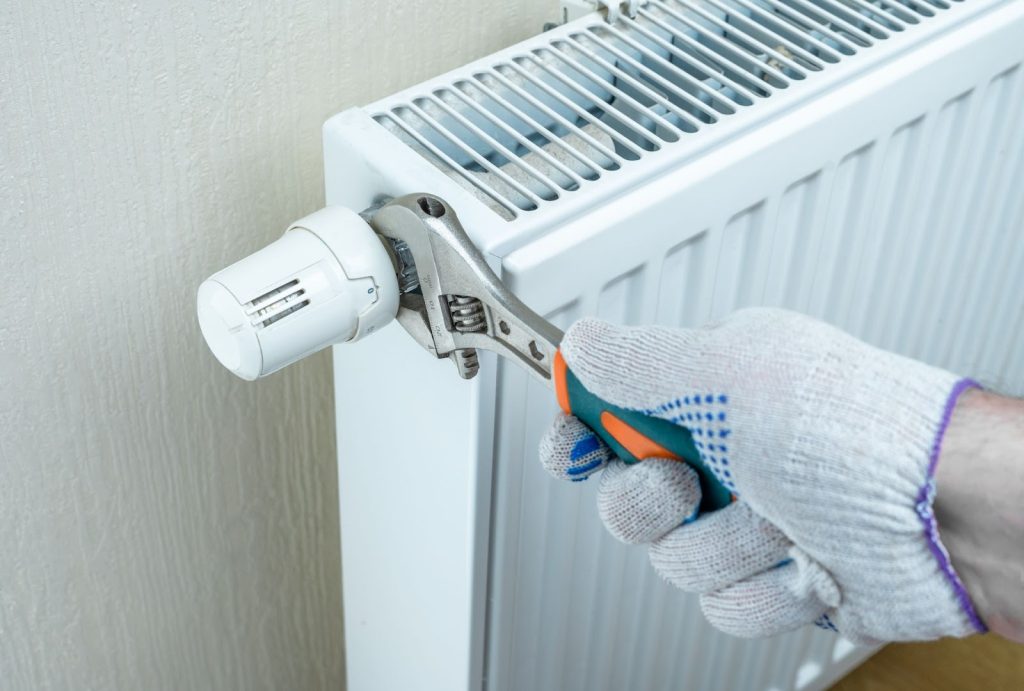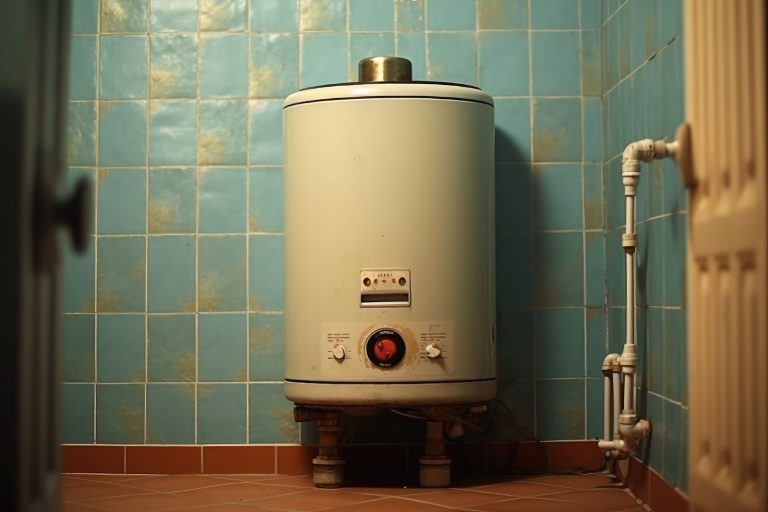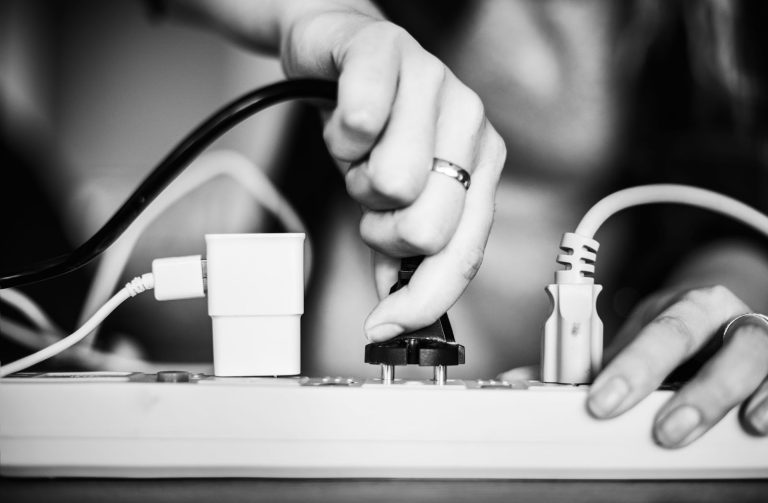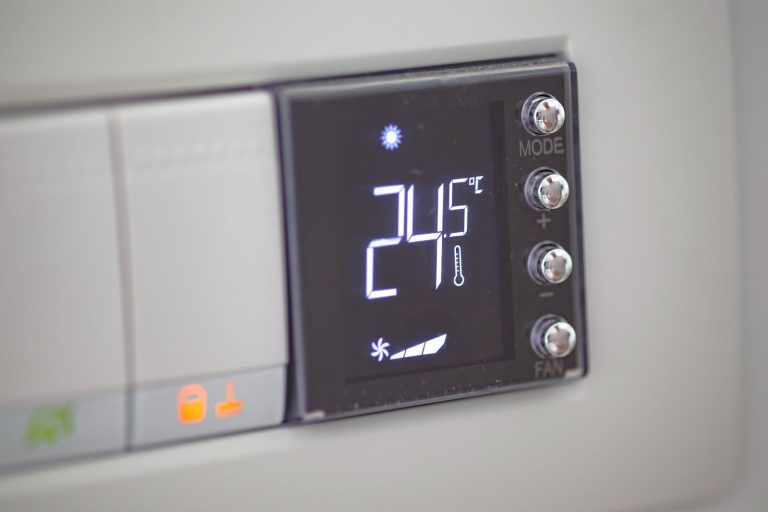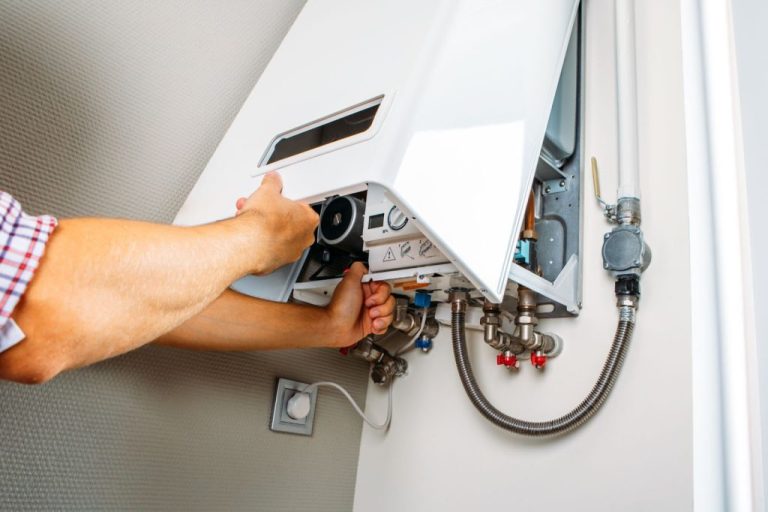How To Drain Central Heating System
July 28, 2023
Are you tired of your central heating system, including your downstairs radiators and main radiator, not performing at its best? Wondering how to prevent issues and extend the lifespan of your combi boilers? Look no further! In this guide, we’ll show you the ins and outs of draining your central heating system with the help of a plumber.
Regular maintenance is crucial for optimal performance of your plumbing system. One essential task that a plumber can help with is draining the water supply system. By doing so, you can avoid costly repairs and ensure efficient operation of your hot water system. But why drain it? Well, draining helps remove accumulated debris, sludge, and rust that can clog pipes and radiators. It’s like giving your plumbing system a refreshing cleanse! So, don’t hesitate to hire a plumber for this job.
So get ready to roll up your sleeves and tackle this important task of maintaining your central heating system with confidence. We’ll walk you through step-by-step instructions to ensure the smooth operation of your downstairs radiators, boilers, and hot water. Say goodbye to cold spots and hello to warmth in every corner of your home, thanks to your combi boiler!
Now let’s dive into the world of central heating systems, where the combi boiler meets cosiness! Whether you need hot water or want to fit a hose pipe, understanding the workings of a central heating system is essential.
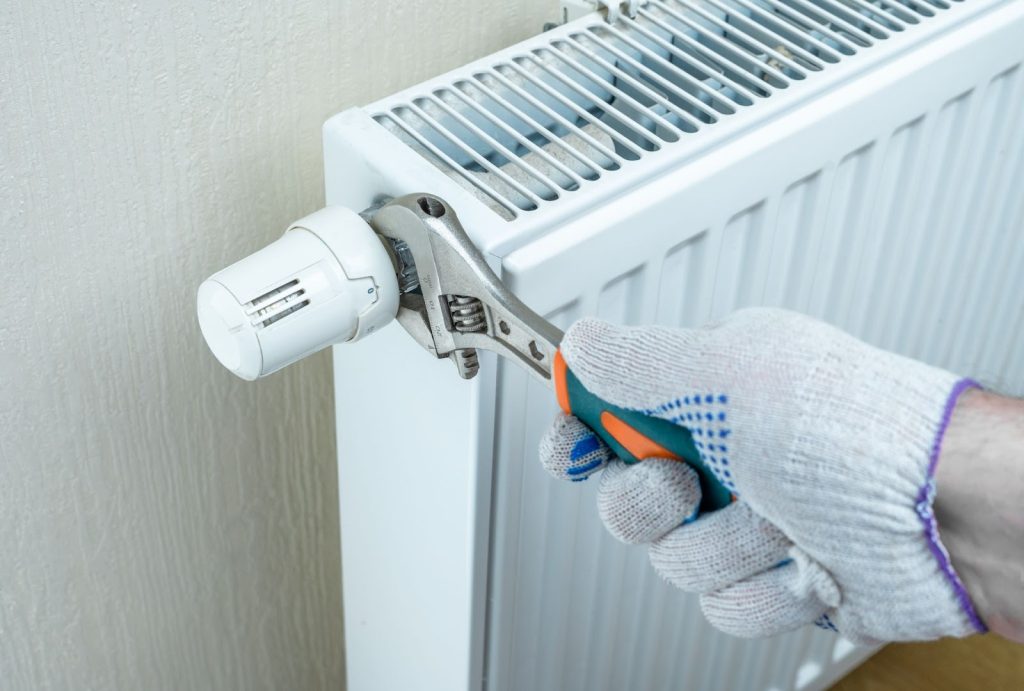
Importance and Benefits of Draining a Central Heating System
Prevent corrosion and buildup by removing old water from the system
Draining your central heating system is necessary work that combats corrosion and buildup. Over time, minerals and impurities can accumulate in the water circulating through your pipes, radiators, and boiler. This buildup not only affects the efficiency of your heating system but also increases the risk of corrosion.

By draining out the old water and replacing it with fresh water, you can effectively remove these impurities and protect your system from damage.
Improve energy efficiency and reduce heating costs
One of the key benefits of draining a central heating system is improved energy efficiency, leading to reduced heating costs. When minerals and sludge build up in your pipes or radiators, they create blockages that restrict the flow of hot water. As a result, your combi boiler needs to work harder to maintain a consistent temperature throughout your home. By regularly draining your system, you ensure that water flows freely without any obstructions, allowing for optimal heat distribution and reducing strain on your combi boiler. This increased efficiency translates into lower energy consumption and ultimately saves you money on heating bills.
Maintain consistent heat distribution throughout your home
A drained central heating system ensures consistent heat distribution across all areas of your home. When there is a buildup of sludge or air pockets within the pipes or radiators, certain areas may receive less heat than others. This imbalance can lead to chilly rooms while others remain overly warm. By flushing out the old water through proper drainage procedures, you eliminate these blockages and air pockets, ensuring that every room receives an equal amount of warmth. Therefore, it is important to regularly maintain your central heating system and use a draining valve to remove any accumulated sludge or air. This will ensure that your combi boiler continues to work efficiently and effectively, providing the heat that you need throughout your home.
Increase the lifespan of your boiler and radiators
Regularly draining your central heating system is crucial for the longevity of your work equipment. It helps prevent the accumulation of sludge, which can cause blockages and put strain on your boiler’s components. This strain can lead to increased wear and tear, costly repairs, or the need for a replacement work boiler. Draining the system also prevents buildup in radiators, ensuring they provide adequate heat and avoiding corrosion. By removing these risks, you allow your work heating equipment to operate optimally and increase their lifespan.
Time required and considerations before draining
Planning to drain your central heating system? It’s important to allocate enough time for the process and take certain considerations into account. Here are some key points to keep in mind before getting started. First, make sure to locate the main radiator and identify the hose pipe that you will need for the draining process.
- Plan for at least a few hours to properly drain your radiator system. While it may seem like a simple task, rushing through it can lead to complications with your central heating systems later on. Allowing ample time ensures you can address any issues that arise along the way. Don’t forget to consider central heating cover if you need additional protection for your system.
- Make sure you have all the necessary tools, such as drain keys or hosepipes, before beginning the process of draining your radiator system. Having these tools readily available will save you from unnecessary delays or trips to the store. This is especially important if you have central heating systems and want to ensure that your central heating cover remains intact.
- Before you commence with draining, it’s crucial to turn off the power supply. This precautionary measure is essential for avoiding any electrical hazards during the drainage process. Safety should always be a top priority when working with any heating system, as you need to ensure that you are taking the necessary steps to protect yourself and others.
- If you’re unsure about the need to drain your central heating system, consider consulting a professional. They have the expertise and experience to guide you through the process and ensure everything is done correctly. It’s better to seek assistance than risk making costly mistakes or damaging your system.
Once you’ve considered the need for draining your central heating system, you can proceed with confidence knowing that you’re well-prepared.
Draining a central heating system is necessary to remove water from components like radiators, pipes, and boilers. This procedure eliminates sludge and debris that can hinder efficiency. Regular maintenance like this is essential to prolong the lifespan of your heating system and ensure optimal performance year-round.
To begin, follow these steps:
- Turn off your boiler: Before starting the draining process for your radiator system, switch off your boiler completely by turning off both electricity and gas supplies if applicable. Make sure you have a central heating cover in case you need any assistance.
- Locate the drain valves you need: Identify where the drain valves you need are located on your central heating system. These are typically found at the lowest points of radiators or near the boiler.
- Prepare a suitable container for your central heating cover: Position a container, such as a bucket or basin, beneath the drain valve to collect the expelled water. It is important to have this container in place whenever you need to drain the system.
- To maintain your central heating system, you need to open the drain valves. Using a drain key or similar tool, slowly open each drain valve one by one. Allow the water, covered by a central heating cover, to flow out into the container until it stops completely.
- Check for sludge: While draining, keep an eye out for any signs of sludge in the expelled water. If you notice excessive amounts of sludge, you may need to flush your central heating system more thoroughly. Don’t forget to consider central heating cover for added protection.
- Close drain valves to prevent any leaks when draining water for central heating cover.
Remember that you need to drain your central heating system once a year to maintain its efficiency and prolong its lifespan. Regular checks and maintenance are always a good idea for the system’s needs.
By allocating enough time, gathering the necessary tools, ensuring safety measures are in place, and seeking professional advice if needed, you can confidently tackle draining your central heating system.
Step-by-step guide: Draining the central heating system
Locate the main valve or draincock on your boiler or radiator
To begin the process of draining your central heating system, you’ll first need to locate the main valve or draincock on either your boiler or radiator. This valve is typically located near the bottom of the unit and may be labelled as a drain valve. Take note of its position as you will need to access it throughout the draining process.
Attach a hosepipe securely to allow water to flow away from your home safely
Once you have located the main valve or draincock for your central heating cover, it’s time to prepare for draining by attaching a hosepipe securely. The hosepipe will serve as a conduit for directing water away from your home, ensuring that it doesn’t cause any damage. Make sure that the hosepipe is tightly connected to prevent any leaks during the draining process.
Open all bleed valves on radiators to release trapped air
Before you can fully drain your central heating system, it’s important to release any trapped air in order to ensure an efficient process. To do this, open all bleed valves on each radiator in your home. These valves are usually located at one end of each radiator and can be opened using a key or screwdriver. By opening these valves, you allow air to escape and make way for an uninterrupted flow of water during drainage.
Gradually open the main valve or draincock, allowing water to drain completely
With the bleed valves open and ready, it’s time to gradually open the main valve or draincock. Slowly turn this valve counterclockwise until it is fully open, allowing water from your central heating system to start flowing out through the attached hosepipe. Keep in mind that depending on how large your system is, this process may take some time.
As you watch water flowing out through the hosepipe, pay attention to any signs of limescale or debris that may be present. If you notice excessive limescale buildup, it may be a good idea to consult with experts or consider using central heating cover to prevent further complications.
Next steps
Once the water has drained completely from your central heating system, you can move on to the next step in the process. This could involve refilling the system, checking for any leaks or issues, or performing maintenance tasks specific to your combi boiler or radiators.
Remember, if you are unsure about any aspect of draining your central heating system, it is always recommended to seek professional help. They have the expertise and experience necessary to guide you through the process and ensure everything is done correctly.
By following this step-by-step guide, you can successfully drain your central heating system and maintain its efficiency for years to come. Take care of your home by regularly performing this essential maintenance task and enjoy a warm and comfortable living environment throughout every season.
Using drain off valve or self cutting drain off for draining
Installing a drain off valve or a self cutting drain off can make the process of draining your central heating system much easier. Whether you want to ensure future maintenance is hassle-free or need an alternative when there is no existing access point, these options provide practical solutions. However, it’s crucial to follow the manufacturer’s instructions carefully during installation and ensure proper sealing to avoid any leaks.
Install a drain off valve for easier future maintenance
One way to simplify draining your central heating system is by installing a drain off valve. This type of valve allows you to easily remove water from your pipes without needing any special tools or equipment. With a simple turn of the valve, you can release the water into a suitable container or drainage area.
When installing a drain off valve for your central heating cover, it’s important to locate an appropriate spot in your system where it can be fitted. Typically, this involves identifying an accessible section of pipe where you can attach the valve securely. Once installed, ensure that the connection is tight and secure to prevent leaks in your central heating cover.
Use self cutting drain off if no existing access point is available
In some cases, you may not have an existing access point in your central heating system for drainage purposes. In such situations, using a self cutting drain off can be an effective solution. This type of fitting allows you to create an access point directly on the pipe itself without requiring any additional tools.
To install a self cutting drain off, follow these steps:
- Identify the location where you want to create the access point.
- Prepare the area by cleaning and ensuring it is free from debris.
- Position the self cutting fitting over the chosen spot and align it properly.
- Apply pressure while rotating the fitting clockwise until it cuts through the pipe.
- Once attached securely, connect a hosepipe or other suitable means for drainage.
Remember, it is crucial to follow the manufacturer’s instructions carefully during installation to ensure proper functionality and avoid any potential leaks.
Separating radiator and heating system for draining
Knowing how to drain each radiator separately can be a valuable skill. By isolating individual radiators using their respective valves, you can perform targeted maintenance without affecting other areas of the heating system.
To begin, locate the radiator valves on each of your radiators. These valves are typically found at either end of the radiator and are responsible for controlling the flow of hot water into the radiator. Once you have identified the valves, follow these steps:
- Isolate individual radiators: Start by turning off the central heating system and closing all other radiator valves except for the one you wish to drain first. This will prevent water from flowing into other radiators while you work on a specific one.
- Drain each radiator separately: With only one radiator valve open, attach a suitable container or hose to catch any water that will be released during the draining process. Next, use a suitable tool such as a radiator key or adjustable wrench to slowly open the bleed valve located at the top of the radiator. As air enters through this valve, water will start to flow out from the bottom valve into your container or hose.
- Refill each drained radiator: Once you have drained a particular radiator completely, close both valves tightly before moving on to another one. It is crucial not to forget this step as failing to refill each drained radiator could lead to imbalances in your heating system.
By following these steps and repeating them for each individual radiator in your home’s central heating system, you can ensure that every unit receives proper maintenance without disrupting others’ functionality.
Draining radiators individually offers several advantages when it comes to maintenance tasks:
- Targeted repairs: By isolating specific radiators, you can focus on addressing issues in a particular area without affecting the entire heating system. This allows for more efficient repairs and reduces downtime.
- Flexibility: Separating radiators for draining provides the flexibility to perform maintenance at your own pace. You can prioritise areas that require immediate attention, such as downstairs radiators experiencing reduced heat output, before moving on to other parts of the system.
- Adding new radiators: If you plan to install a new radiator, being able to drain individual units enables you to integrate it seamlessly into your existing central heating system. You can isolate the main radiator and connect the new one without disrupting other upstairs radiators’ operation.
Refilling and Bleeding the Central Heating System after Draining
After draining your central heating system, it is crucial to properly refill and bleed it to ensure optimal performance. Here are the steps you need to follow:
Close all drain valves and ensure they are tightly sealed
Before refilling the system, make sure that all drain valves are closed tightly. This will prevent any water from leaking out once you start refilling. Inspect each valve carefully and ensure a secure seal to avoid any future issues.
Refill the system with fresh water, using a filling loop if necessary
To refill your central heating system, you will need fresh water. Connect a filling loop to the appropriate inlet valve and open it gradually. Keep an eye on the pressure gauge as you fill the system, ensuring it reaches the recommended level.
If you don’t have a filling loop or are unsure about its usage, consult a professional or refer to your heating system’s manual for guidance.
Bleed each radiator to remove any trapped air
Air pockets can accumulate in radiators during the draining process, leading to reduced efficiency and uneven heat distribution. To eliminate these air pockets, bleed each radiator individually.
Start by locating the bleed valve on each radiator; it is usually situated at one end near the top. Use a bleed key or screwdriver to open this valve slightly while keeping a cloth handy to catch any drips.
Once opened, listen for hissing sounds indicating trapped air escaping from the radiator. Once water starts flowing consistently without any air bubbles, close the bleed valve tightly. Repeat this process for every radiator in your central heating system.
Monitor pressure levels and adjust as needed
After refilling and bleeding your central heating system, monitor its pressure levels regularly. The ideal pressure range may vary depending on your specific setup; refer to your manufacturer’s instructions for guidance.
If you notice that pressure levels drop below or exceed recommended limits, adjustments are necessary. To increase pressure, use the filling loop to add more water. Conversely, if the pressure is too high, release excess water using a bleed valve.
Remember to follow safety precautions and never exceed the recommended pressure limits to avoid damaging your heating system.
By following these steps, you can effectively refill and bleed your central heating system after draining it. This ensures proper functionality, efficient heat distribution, and a comfortable living environment.
Note: It is essential to consult a professional or refer to your manufacturer’s instructions for specific guidance on refilling and bleeding procedures as they may vary depending on your heating system type (e.g., gas, solid fuel) or any additional chemicals or components used in your setup.
Conclusion
Draining your central heating system is a crucial maintenance task that offers numerous benefits. By following the easy steps outlined in this guide, you can ensure the longevity and efficiency of your heating system.
Taking the time to drain your central heating system is well worth it. Not only does it help remove any accumulated sludge or debris, but it also prevents potential issues such as corrosion and blockages. Regularly draining your system can improve its performance and extend its lifespan, saving you money on repairs and replacements in the long run.
Before starting the process, make sure you have enough time set aside as draining a central heating system typically takes a few hours. Consider turning off any power sources connected to the system and gathering all necessary tools beforehand for a smooth draining experience.
The step-by-step guide provided outlines how to drain your central heating system effectively. Whether you choose to use a drain off valve or self-cutting drain off, both methods are viable options for safely removing water from your system. It’s important to follow each step carefully to avoid any mishaps or damage.
Remember to separate radiators from the rest of the heating system before draining. This ensures that water is completely removed from each radiator individually, preventing potential leaks or airlocks when refilling later on.
Once you have successfully drained your central heating system, it’s essential to refill and bleed it properly. This will remove any trapped air pockets and ensure an even flow of hot water throughout your home. Following these steps will guarantee that your heating system operates at its best efficiency after being drained.
To sum up, regularly draining your central heating system is an essential maintenance task that offers significant benefits such as improved performance and increased lifespan. By following the easy steps provided in this guide, you can confidently maintain your central heating system without relying on professional assistance.
Now that you know how to drain your central heating system easily and safely, take action today and give your heating system the care it deserves. Your future self will thank you for it!
FAQs
Q: How often should I drain my central heating system?
A: It is recommended to drain your central heating system at least once a year to ensure optimal performance and prevent any potential issues.
Q: Can I drain my central heating system myself, or do I need professional help?
A: With the proper guidance and precautions, draining your central heating system can be done by yourself. However, if you are unsure or uncomfortable with the process, it is always best to seek professional assistance.
Q: Is it necessary to turn off power sources before draining the central heating system?
A: Yes, turning off any power sources connected to your central heating system is crucial for safety reasons. This includes shutting off electricity and gas supply if applicable.
Q: What tools do I need to drain my central heating system?
A: Some common tools required for draining a central heating system include a hosepipe, adjustable wrenches, buckets or containers for collecting water, and radiator keys for bleeding.
Q: Can I refill my central heating system immediately after draining it?
A: It is recommended to wait until you have successfully refilled and bled your central heating system before turning it back on. This ensures that all air pockets are removed and prevents potential damage caused by running the system without water.
Q: Will draining my central heating system improve its efficiency?
A: Yes, regularly draining your central heating system helps remove accumulated sludge and debris, allowing for better heat transfer and improved overall efficiency.
Q: Does draining a central heating system prevent corrosion?
A: Draining your central heating system helps remove corrosive elements such as rust particles and oxygenated water, reducing the risk of corrosion within the pipes and radiators.
Q: Can I use alternative methods instead of a drain off valve or self-cutting drain off?
A: While drain off valves and self-cutting drain offs are commonly used, there may be alternative methods available depending on your specific heating system. It is best to consult a professional if you are unsure about the most suitable method for your system.
Q: What should I do if I encounter any issues while draining my central heating system?
A: If you encounter any difficulties or unexpected problems while draining your central heating system, it is advisable to seek professional assistance.

